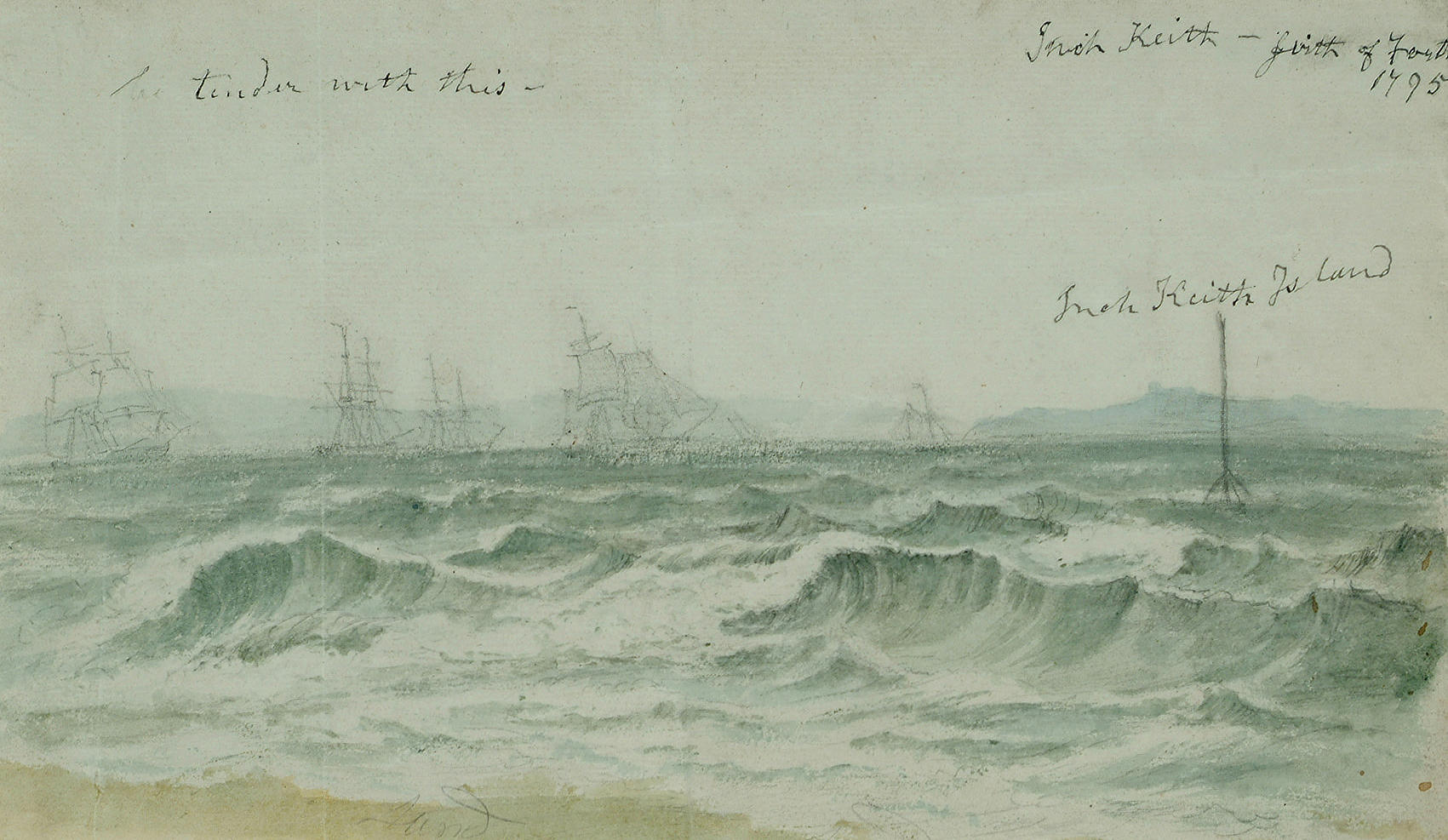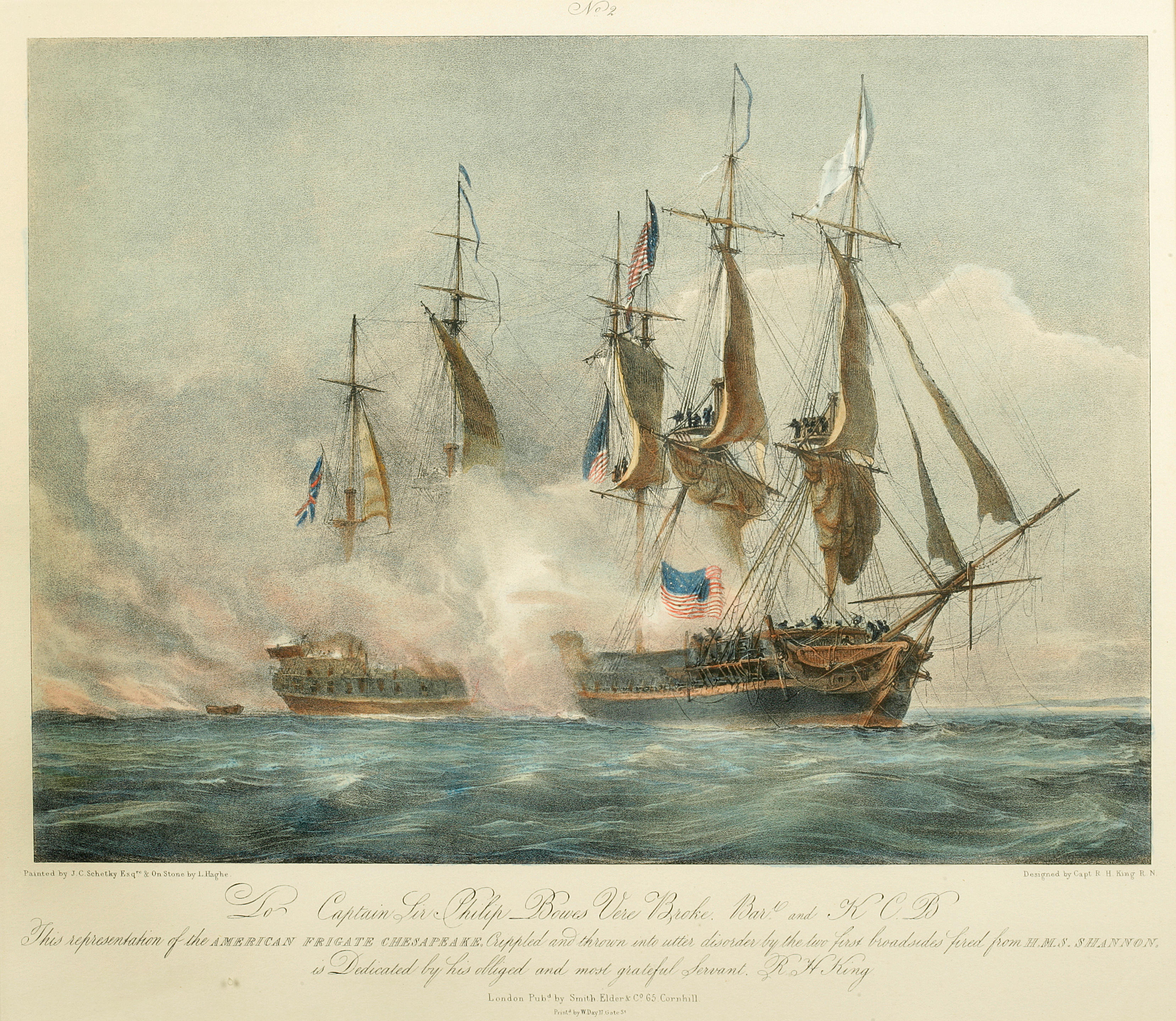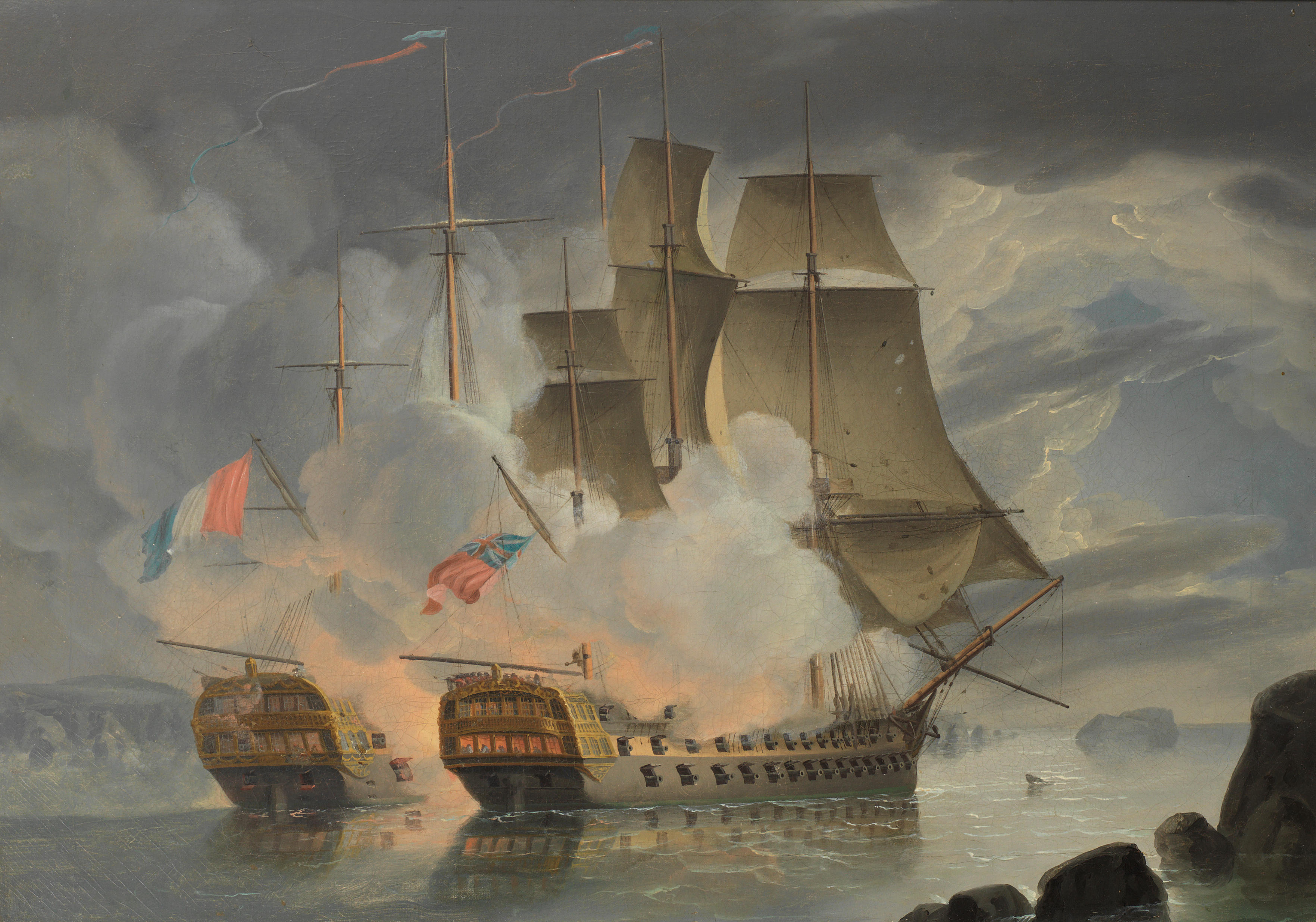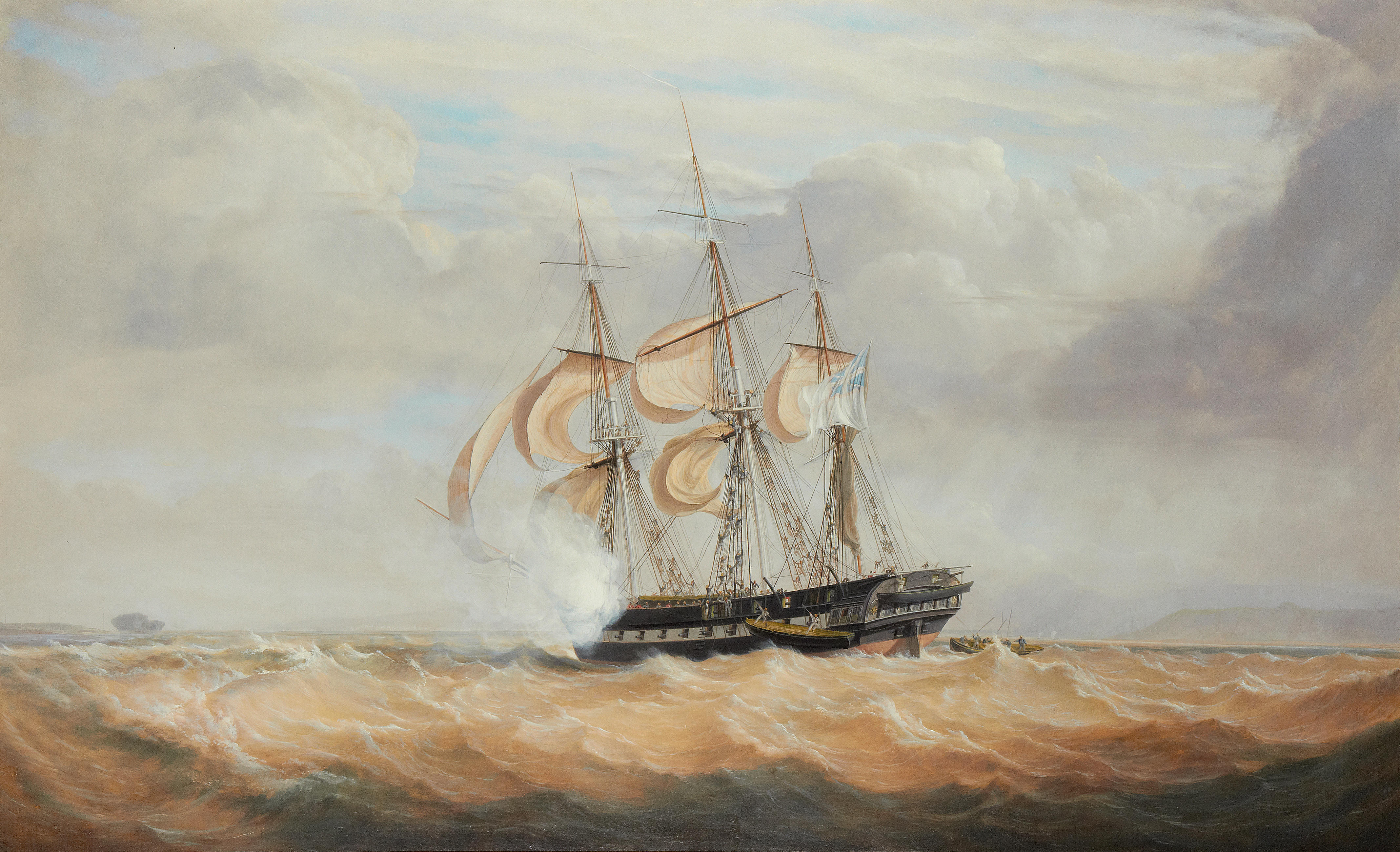John Christian Schetky (British 1778-1874) H.M.S. Talbot, Captain Hon. F. Spencer in Action on Naverino, 20 October 1827 Oil on canvas Signed and dated 1831 lower left, inscribed to label verso 67 x 108cm (26¼ x 42½ in.) Provenance: Provenance: From the Collection of the late Max Harari Reputedly purchased from the 8 th Earl Spencer, Althorp House, Northamptonshire Catalogue Note: H.M.S. Talbot Six ships of the Royal Navy have been named HMS Talbot. The Talbot depicted here was an Atholl Class 28-gun frigate, a sixth rate ship of the line launched from Pembroke Dockyards in 1824, converted to a powder hulk in 1855 and sold out in 1896. The ship had a crew of 175 officers and ratings. Other assignments of note include Inglefield's Artic Expedition of 1854. The Battle of Navarino, 20 October 1827 The Battle of Navarino, 20 October 1827 The last major naval battle to be fought entirely with sailing ships The Battle of Navarino was a naval battle fought during the Greek War of Independence (1821 32), in Navarino Bay, on the west coast of the Peloponnese peninsula. An Ottoman fleet, which included imperial warships and squadrons from the eyalets of Egypt and Tunis, was decisively defeated by an Allied force of British, French and Russian warships. The context of the three Great Powers' intervention was the Russian Empire's gradual, but determined, expansion into the decaying Ottoman Empire. Russia's geostrategic ambitions in the region were seen as a major threat by the other European powers, who feared the disintegration of the Ottoman Empire and the establishment of Russian hegemony in the Eastern Mediterranean. The enabling factor was Orthodox Russia's inevitable support for their Greek co-religionists, who had rebelled against Ottoman rule in 1821. Despite official British interest in maintaining the Ottoman Empire, the British public strongly supported the Greeks. Fearing unilateral Russian action, and thus a faster envelopment of the region, Britain and France bound Russia by treaty to a joint intervention which aimed to secure Greek autonomy whilst still preserving Ottoman territorial integrity. The Powers agreed, by signing the Treaty of London (1827), to force the Ottoman government to grant the Greeks autonomy within the empire. To enforce this policy they despatched naval squadrons to the Eastern Mediterranean. The naval battle happened more by accident than by design as a result of a manoeuvre by the Allied commander-in-chief, Admiral Edward Codrington, aimed at coercing the Ottoman commander to obey Allied instructions. Codrington even ordered a brass band to play on the deck of his ship to emphasise his peaceful intentions. There was no attempt by the Ottoman batteries to restrict allied movement into Navarino Bay, however a launch was sent carrying a message from Ibrahim Pasha, which objected to Coddrington s presence and demanded his total withdrawal. Codrington dismissed Ibrahim's objection, replying that he had come to give orders, not to take them. He warned that if the Ottomans opened fire, their fleet would be destroyed. It was when this strategy was thwarted by the Ottoman trumpet signal to prepare for action that fighting broke out. During the battle, the British frigates Armide and Talbot initially had to face the frigates on the Ottoman right wing and the island shore battery unsupported, as the other two frigates arrived later. They were saved from annihilation by the arrival of the Russian frigates. The sinking of almost the entire Ottoman Mediterranean fleet by the overwhelmingly superior allied firepower at Navarino protected the fledgling Greek Republic from collapse. It would however require two more military interventions by Russia in the form of the Russo-Turkish War of 1828-9, and by a French expeditionary force to the Peloponnese to force the withdrawal of Ottoman forces from central and southern Greece to finally secure Greek independence. Although mostly fought at anchor,
John Christian Schetky (British 1778-1874) H.M.S. Talbot, Captain Hon. F. Spencer in Action on Naverino, 20 October 1827 Oil on canvas Signed and dated 1831 lower left, inscribed to label verso 67 x 108cm (26¼ x 42½ in.) Provenance: Provenance: From the Collection of the late Max Harari Reputedly purchased from the 8 th Earl Spencer, Althorp House, Northamptonshire Catalogue Note: H.M.S. Talbot Six ships of the Royal Navy have been named HMS Talbot. The Talbot depicted here was an Atholl Class 28-gun frigate, a sixth rate ship of the line launched from Pembroke Dockyards in 1824, converted to a powder hulk in 1855 and sold out in 1896. The ship had a crew of 175 officers and ratings. Other assignments of note include Inglefield's Artic Expedition of 1854. The Battle of Navarino, 20 October 1827 The Battle of Navarino, 20 October 1827 The last major naval battle to be fought entirely with sailing ships The Battle of Navarino was a naval battle fought during the Greek War of Independence (1821 32), in Navarino Bay, on the west coast of the Peloponnese peninsula. An Ottoman fleet, which included imperial warships and squadrons from the eyalets of Egypt and Tunis, was decisively defeated by an Allied force of British, French and Russian warships. The context of the three Great Powers' intervention was the Russian Empire's gradual, but determined, expansion into the decaying Ottoman Empire. Russia's geostrategic ambitions in the region were seen as a major threat by the other European powers, who feared the disintegration of the Ottoman Empire and the establishment of Russian hegemony in the Eastern Mediterranean. The enabling factor was Orthodox Russia's inevitable support for their Greek co-religionists, who had rebelled against Ottoman rule in 1821. Despite official British interest in maintaining the Ottoman Empire, the British public strongly supported the Greeks. Fearing unilateral Russian action, and thus a faster envelopment of the region, Britain and France bound Russia by treaty to a joint intervention which aimed to secure Greek autonomy whilst still preserving Ottoman territorial integrity. The Powers agreed, by signing the Treaty of London (1827), to force the Ottoman government to grant the Greeks autonomy within the empire. To enforce this policy they despatched naval squadrons to the Eastern Mediterranean. The naval battle happened more by accident than by design as a result of a manoeuvre by the Allied commander-in-chief, Admiral Edward Codrington, aimed at coercing the Ottoman commander to obey Allied instructions. Codrington even ordered a brass band to play on the deck of his ship to emphasise his peaceful intentions. There was no attempt by the Ottoman batteries to restrict allied movement into Navarino Bay, however a launch was sent carrying a message from Ibrahim Pasha, which objected to Coddrington s presence and demanded his total withdrawal. Codrington dismissed Ibrahim's objection, replying that he had come to give orders, not to take them. He warned that if the Ottomans opened fire, their fleet would be destroyed. It was when this strategy was thwarted by the Ottoman trumpet signal to prepare for action that fighting broke out. During the battle, the British frigates Armide and Talbot initially had to face the frigates on the Ottoman right wing and the island shore battery unsupported, as the other two frigates arrived later. They were saved from annihilation by the arrival of the Russian frigates. The sinking of almost the entire Ottoman Mediterranean fleet by the overwhelmingly superior allied firepower at Navarino protected the fledgling Greek Republic from collapse. It would however require two more military interventions by Russia in the form of the Russo-Turkish War of 1828-9, and by a French expeditionary force to the Peloponnese to force the withdrawal of Ottoman forces from central and southern Greece to finally secure Greek independence. Although mostly fought at anchor,











Try LotSearch and its premium features for 7 days - without any costs!
Be notified automatically about new items in upcoming auctions.
Create an alert